You may be asking – what is a sensory bin? Sensory bins (or sensory tubs) are an open-ended invitation for preschoolers and toddlers to play in a hands-on way. There is usually an abundance of a particular material (or filler). Kids can feel, touch, smell, examine and describe. There are usually vessels and utensils like cups, spoons or tongs, so kids can pick up, scoop, measure, pour, transfer and sort. This sort of play is non-competitive and has no end goal in mind, making it ideal for situations where you have kids of different ages or abilities, or kids with sensory processing needs. Since there is no ‘correct way’ to play, it is also great no-pressure play for kids (like my daughter) who set too high expectations for themselves.
I was so pleased to be invited to be a part of the 40 Days of Sensory Bin Fillers series by Little Bins for Little Hands, where 40 bloggers highlight 40 different sensory bin fillers over 40 days. Check out the series Pinterest board here.
The beauty of sticks as a sensory bin filler is that they contain natural variations that make them very interesting to play with. There are all sorts of sticks (and twigs) – long ones, short ones, fat ones, thin ones, some that have little knobbly bits, greenish ones, browner ones, ones that snap easily and ones that are very hard to break. They are free, environmentally sustainable and encourage an appreciation of nature. And you probably already have them in abundance right out your backdoor.
On this particular occasion, I gathered up some sticks that were lying in our backyard. (We have a big gumtree overhead that drops lots of sticks all year round). I broke, snapped and cut them until they were a manageable length, and the coupled these with a few other natural items – a pail of some clean sand, a small container of little gumnuts, and some green leaves. I also included some mini tongs, a wire cake cooler, a couple of different shaped ice-cube trays from the kitchen. Somehow one of our sandpit shovels also made it in.
And then I let the girls play!
My toddler Bee (18 months) really loved picking up the little gumnuts (with her developing pincer grasp) and transferring them one by one to the cube-shaped icecube trays.
My preschooler JJ (3 years and 10 months) preferred to use the tongs to pick up the sticks (working her fine motor skills) and transfer them to the black silicon icecube trays where the indents are shaped more like a long slit than a cube. She checked the shape of each stick that she picked up against the shape of the tray indent and estimated whether it would fit. She also tried to fit sticks of different diameters through the gaps in the wire cake cooler, guessing, and then trialing to see if her prediction was accurate. (All fantastic early math and science practise!)
JJ also pretended that the pail of sand was a cake, and decorated it with gumnuts and leaves.
Lots of fun, using (mostly) natural, free materials!
If you are after some other sticky suggestions – here’s a few playful ideas we’ve done previously. (These, and many others, are all pinned to my Pinterest board Playing, Crafting and Learning with Nature.)
And if you’ve ever made a sensory bin that includes sticks or twigs, please link up below!
xx Danya

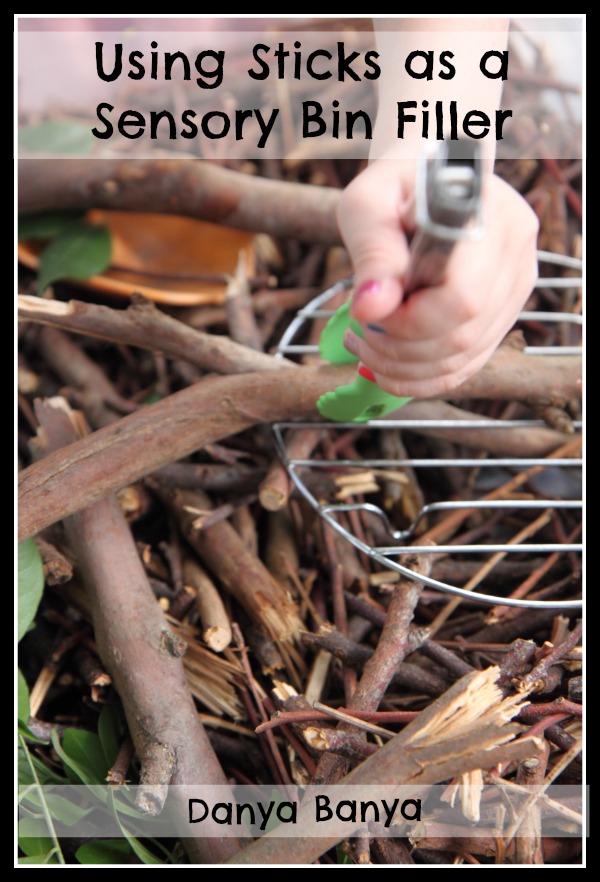
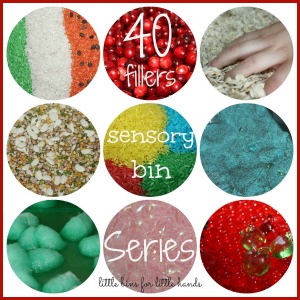
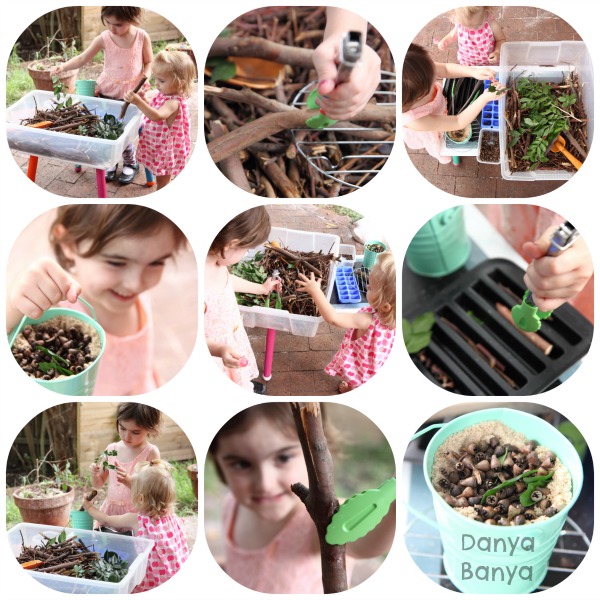
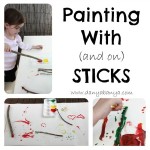
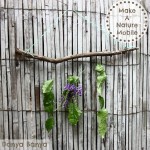
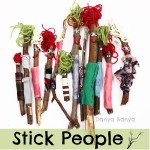
#
I love this! I have never thought of using sticks in a sensory bin before, but they are a wonderful material (and free too! lol!)
My recent post We Love Weekends 4-4
#
Thanks! We love them, which is lucky, as we have them in abundance at our place. 🙂
#
This is such a clever idea… our back yard is full of sticks!!!
My recent post Simple Parenting and Play Planner Review and Give Away.
#
Thanks Kate. Our gum tree seems to provide us with an endless supply too. 🙂